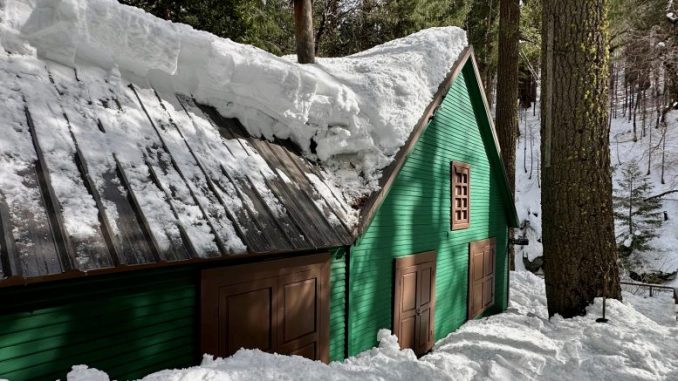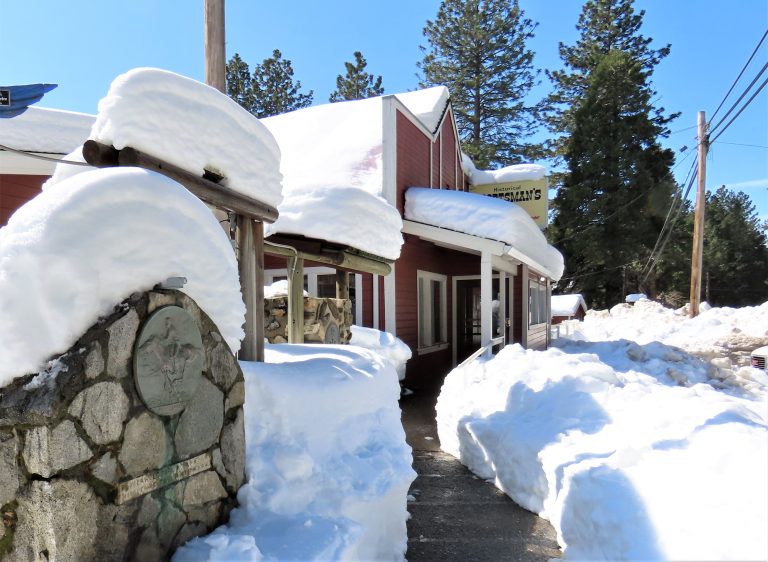
By Ken Magri
While the Sierra snowpack has mostly ended California’s three-year drought, it is creating big problems for people who live in the mountains. Once the warmer spring temperatures arrive, those problems could be flowing in our direction.
Last Friday’s California Department of Water snow survey for March recorded 116.5 inches, which is 170% of average for the location near Sierra at Tahoe ski resort. A few miles further east at Echo Summit, the snow fall has exceeded 13 feet.
With power outages and residents snowed-in throughout the Sierra and Cascade mountain ranges, Governor Newsome declared a state of emergency for California’s 13 mountain counties. Two new storms coming through this week are adding three to six additional feet of snow, including measurable amounts that will fall as low as 2,000 feet elevation.
If you are a skier, this is heaven. But for local residents, the day-to-day process of living in the mountains has become an inconvenience for all and a nightmare for some.
In some foothill elevations snowfall is now being measured in feet, and the colder temperatures are preserving it. At higher elevations, even where residents expect a lot of snow, this year’s amounts have made the simplest outdoor tasks feel like an endurance run.
In the 1960s, my father got a call from his friend Vlad Sabich, a California Highway Patrolman who lived in Kyburz. Mr. Sabich advised us to quickly get up to our mountain cabin, a few miles further up Highway 50.
Why? Winter storms had piled six feet of snow onto the roof. With a forecast of rain that could weigh down the snow without melting it, there was a high risk of a roof cave-in. Mr. Sabich knew we would need to shovel it off our wood-shake roof right away.
Last week I watched weather reports with memories of that long-ago winter. We still own that cabin, and the current roof is aluminum. But with two new snowstorms coming, last Friday’s sunny weather created a window of opportunity to drive up with a friend and shovel the roof.
The drive up Highway 50

Snow begins covering the ground at the 2,000 feet mark on the east side of Placerville, where the foothills are still quite far from the mountain peaks. It looks odd to see the barren grape vineyards of Apple Hill coated in white. What might normally melt away on a single sunny afternoon has been preserved by this winter’s consistently colder temperatures.
In Pollock Pines, 14 miles up the highway, so many piles of cleared snow sit along the roadside that it creates a tunnel effect. Driving into town along Pony Express Road, we picked up an elderly hitchhiker trying to get to the post office one mile away. “My car is buried under five feet of snow right now,” he told us.
“Yes, my van is under that pile right over there,” said our waitress at the Burger Barn. “We just got this lot barely cleared yesterday, and there’s three more feet coming,” she said. Winter supplies like sidewalk salt, anti-freeze and windshield washer fluid were selling like crazy at the nearby Safeway. Its parking lot was half-filled with piled-up snow and half with cars.
Cities like South Lake Tahoe prepare for such snow amounts, because they expect it. “We have been very impressed with how they handle the roads up here,” said Sacramento resident Diane Luther, who rented a house at Tahoe for the weekend. But by Saturday afternoon she reported that “the deluge has begun and it has snowed about 5” so far.” Luther expected to be delayed an additional day before returning home, due to the storms.
Power outages are the most fearful thing that can happen in the Sierra this time of year. When the power goes out, so does the cellular service. It puts residents into survival mode, where some can fire up generators and stoke up their fireplace. Others need to immediately find a safer, warmer situation. Meanwhile, PG&E has 500 crews working throughout the mountains to repair snapped power poles and tangled lines.
Four miles east of Pollock Pines, Fresh Pond looked like a convenient location for families who just wanted to take their kids to play in the snow for an afternoon. Up at Icehouse Reservoir, there was enough time for Emily and Paisley Broddrick to play in the white powder before the start of Saturday’s storm sent them back down the mountain. Near Bridal Veil Falls, snow plows were pre-positioned along the roadside. A monstrous snow grinder, with a dump truck following behind, worked to cut away frozen snow that would clear two full lanes of roadway in each direction.
Once we made it to the cabin, everything looked absolutely beautiful, until getting out and trying to do something. With no direct sunlight at 4,700 feet elevation, the wind-chill hits hard. Despite wearing mountain snowshoes, we were sinking down three feet with each step. Colder temperatures made the snow sticky, Chunks of it were clinging to our shoes and pants.
The metal cabin roof was almost entirely clear on the sunny side, where sunlight filters into the canyon for a few hours each day. It warmed the metal and allowed snow to slide off. But the shaded side in back had snow piled three feet high. After two hours of shoveling, we were exhausted and made a wise decision to quit. But we still managed to clear 80% of the roof, making it safer for this week’s new accumulations.
What will the spring run-off bring?

At some point warm weather returns and the annual snow run-off could create problems in two ways. Because the 2021 Dixie and Caldor Fires destroyed so much of the tree canopy in snow-covered areas, snow melts more quickly now. Blackened earth and cinders on bare ground also accelerate the pace of melting. It is a phenomenon explained by a recent study in Geographical Research Letters
(https://agupubs.onlinelibrary.wiley.com/doi/10.1029/2022GL101235) which suggests that Sierra snows will continue to melt faster for several more years.
But another warm atmospheric river this winter could dramatically accelerate melting snow, bringing down enough water to flood the Central Valley. That scenario played out in the winter of 1996/97, when a series of warm rainstorms melted eight feet of snow in a week.
The combination of water and melting snow flooded the Cosumnes and American Rivers, created levee breaks and closed every major highway heading out of Sacramento. A giant landslide near Riverton took out several cabins and a section of Highway 50, which had to be rebuilt around the newly-formed landscape.
So while the mountain scenes are spectacular and the skiing is superb right now, we still face a precarious few months hoping for a slow and safe run-off.

Be the first to comment